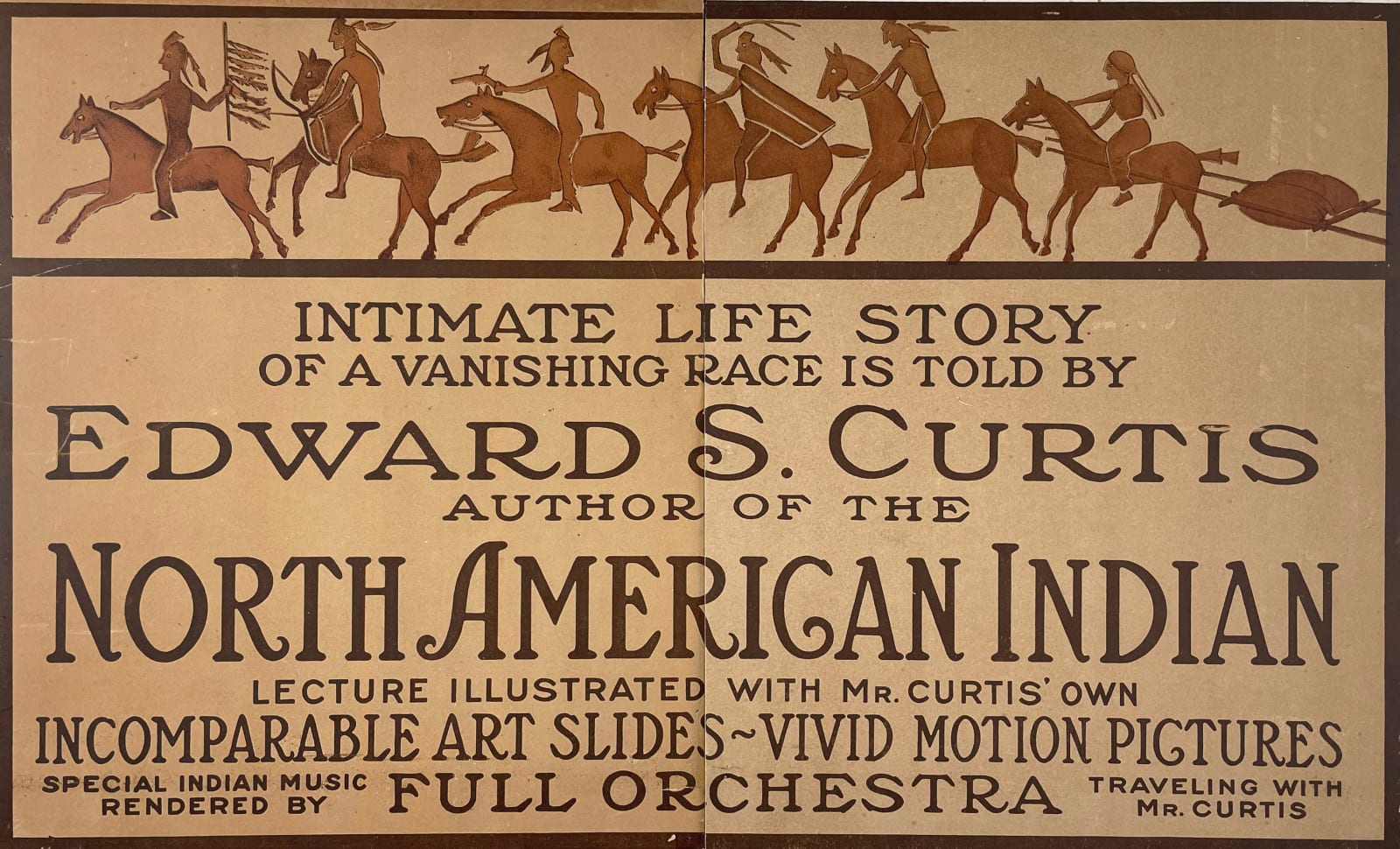Edward Curtis
Advertisement for Curtis' Traveling Picture Opera, c. 1911-12
Lithograph on board, 2 parts
Overall 14 x 22 inches
Sold
In 1911, Edward Curtis was struggling to complete his magnum opus 'The North American Indian' due to rapidly depleting funds. As a new means of income he came up with...
In 1911, Edward Curtis was struggling to complete his magnum opus "The North American Indian" due to rapidly depleting funds. As a new means of income he came up with an idea for a unique show that he called a "traveling picture opera." It was a performance that combined film, slides, and live music to tell the story of the disappearing Native American way of life, using Curtis's own images and experiences. He even hired a composer named Henry F. Gilbert to create the music for the show, which was based on firsthand recordings Curtis had made using wax cylinders.
To heighten the show's entertainment value Curtis colorized his slides giving the images a lifelike feel. These were enlarged using a magic lantern projector, alongside moving images that he'd recorded in the field. Curtis narrated the show based on his own observations, which had gained recognition in academic and critical circles, despite his lack of formal education. This hybrid work and other experiments with film eventually led Curtis to produce the problematic-yet-groundbreaking film "In the Land of the Head-Hunters" in 1914, now considered one of the earliest documentary films and more notable for using an all-American Indian cast.
Unfortunately, the "traveling picture opera" did not solve Curtis's financial problems. The expenses of touring eventually exceeded revenue, and he was left at the end of the tour as dependent as ever on the Morgan family for funding. Despite this setback, Curtis continued his work on The North American Indian, which remains an important record of Native American culture and history. The project was concluded in 1930, contains over 2,200 photographs of more than 100 Native Nations and Tribes.
To heighten the show's entertainment value Curtis colorized his slides giving the images a lifelike feel. These were enlarged using a magic lantern projector, alongside moving images that he'd recorded in the field. Curtis narrated the show based on his own observations, which had gained recognition in academic and critical circles, despite his lack of formal education. This hybrid work and other experiments with film eventually led Curtis to produce the problematic-yet-groundbreaking film "In the Land of the Head-Hunters" in 1914, now considered one of the earliest documentary films and more notable for using an all-American Indian cast.
Unfortunately, the "traveling picture opera" did not solve Curtis's financial problems. The expenses of touring eventually exceeded revenue, and he was left at the end of the tour as dependent as ever on the Morgan family for funding. Despite this setback, Curtis continued his work on The North American Indian, which remains an important record of Native American culture and history. The project was concluded in 1930, contains over 2,200 photographs of more than 100 Native Nations and Tribes.
